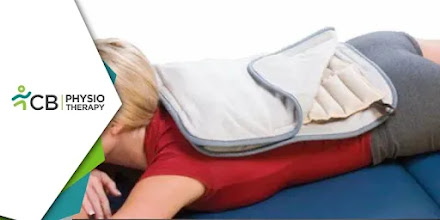As winter sets in, the temperature drop often brings a slew of musculoskeletal challenges. Many people experience stiffness in their joints, increased muscle tension, and even exacerbated symptoms of chronic conditions like arthritis. This is where thermotherapy — the application of heat — emerges as an effective tool in physiotherapy to alleviate these issues. By understanding the science behind thermotherapy and its specific applications, individuals can harness its full potential to maintain musculoskeletal health during the colder months.
Understanding Thermotherapy
Thermotherapy refers to the therapeutic use of heat to relieve pain, improve circulation, and relax muscles. It involves applying heat to the body using various methods such as hot packs, heating pads, warm water baths, or advanced devices like infrared lamps. The heat penetrates the skin, reaching the underlying tissues, and triggers physiological responses that are particularly beneficial in combating the effects of cold weather on muscles and bones.
Why Winters Aggravate Musculoskeletal Issues
Cold weather has a significant impact on the human body, particularly the musculoskeletal system. Low temperatures can cause:
1: Muscle Stiffness: The cold causes muscles to contract, reducing their elasticity and making them more prone to stiffness.
2: Joint Pain: Reduced circulation and synovial fluid viscosity in joints can increase friction and discomfort, especially in individuals with arthritis.
3: Reduced Blood Flow: Cold weather constricts blood vessels, limiting oxygen and nutrient supply to muscles and bones.
4: Increased Risk of Injuries: Stiff muscles and joints are more susceptible to strains and sprains.
Thermotherapy counteracts these effects, making it a popular intervention during the winter season.
Physiological Effects of Thermotherapy
The application of heat induces several physiological responses, including:
1: Enhanced Blood Circulation: Heat causes vasodilation, which improves blood flow to the affected area. Increased circulation delivers essential nutrients and oxygen to tissues while aiding in removing metabolic waste.
2: Pain Relief: Thermotherapy reduces the transmission of pain signals to the brain by desensitizing nerve endings. Additionally, it helps release endorphins, the body’s natural painkillers.
3: Muscle Relaxation: Heat reduces muscle tension by decreasing the excitability of muscle spindle fibers, leading to improved flexibility and range of motion.
4: Increased Tissue Elasticity: Heat improves the extensibility of collagen fibers in muscles and ligaments, which is particularly useful in treating stiffness.
5: Reduction of Joint Stiffness: By increasing the viscosity of synovial fluid in joints, thermotherapy helps restore smooth movement and reduces discomfort.
Applications of Thermotherapy in PhysiotherapyThermotherapy is employed in various ways to address winter-specific musculoskeletal issues. Some of the most common applications include:
1. Managing Arthritis Pain
Arthritis symptoms tend to worsen in colder months due to decreased circulation and increased joint stiffness. Thermotherapy helps by:
a) Reducing joint stiffness and pain.
b) Enhancing mobility and flexibility.
c) Preparing the joints for exercise and physiotherapy sessions.
2. Alleviating Muscle Spasms and Strains
Muscle spasms and strains are common during winter due to reduced flexibility and improper warm-ups. Applying heat to the affected muscles:
a) Promotes relaxation and reduces spasms.
b) Enhances blood flow, accelerating the healing process.
3. Relieving Chronic Back Pain
Cold weather can exacerbate chronic back pain, especially in individuals with conditions like herniated discs or sciatica. Heat therapy can:
a) Relax tight muscles and reduce pressure on nerves.
b) Alleviate pain by increasing endorphin release.
4. Post-Exercise Recovery
Exercising in cold weather increases the risk of delayed onset muscle soreness (DOMS). Applying heat post-exercise:
a) Eases muscle tension.
b) Prevents stiffness and promotes quicker recovery.
5. Treating Soft Tissue Injuries
While cold therapy is preferred during the acute phase of injuries, thermotherapy is beneficial during the subacute and chronic phases. It:
a) Speeds up tissue repair.
b) Reduces chronic inflammation.
c) Improves range of motion.
Role of Physiotherapists in Winter CareA physiotherapist plays a crucial role in tailoring thermotherapy treatments to individual needs. They assess the condition, identify the appropriate heat modality, and guide patients on safe usage. Moreover, physiotherapists often integrate thermotherapy into a comprehensive treatment plan that includes exercises, manual therapy, and lifestyle modifications to ensure long-term benefits.
Home-Based Thermotherapy Tips
For individuals looking to incorporate thermotherapy into their winter self-care routine, here are some practical tips:
a) Use a hot water bottle or heating pad to warm up stiff muscles before starting the day.
b) Take a warm bath infused with Epsom salts to relieve joint and muscle pain.
c) Wear thermal clothing to maintain body warmth and reduce muscle tension.
d) Incorporate gentle stretches after applying heat to maximize flexibility.
Thermotherapy is a powerful ally in managing the musculoskeletal challenges posed by winter. Its ability to alleviate pain, improve circulation, and relax muscles makes it an indispensable tool in physiotherapy. By understanding its benefits and applications, individuals can combat winter stiffness and pain effectively, ensuring a season of comfort and mobility. Under the guidance of a qualified physiotherapist, thermotherapy can be seamlessly integrated into a holistic approach to musculoskeletal health, enabling individuals to thrive even in the coldest months.

